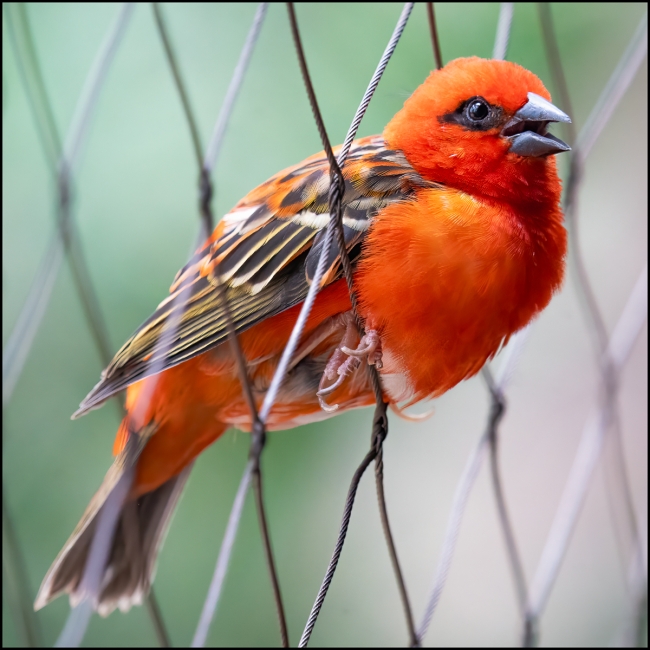The red fody (Foudia madagascariensis), also known as the Madagascar fody in Madagascar, red cardinal fody in Mauritius, or common fody, is a small bird native to Madagascar and introduced to various other islands in the Indian Ocean. It is a common bird within its restricted range, and the International Union for Conservation of Nature has assessed its conservation status as being of “least concern”.
In 1760 the French zoologist Mathurin Jacques Brisson included a description of the red fody in his Ornithologie based on a specimen collected in Madagascar. He used the French name Le cardinal de Madagascar and the Latin Cardinalis Madagascariensis. Although Brisson coined Latin names, these do not conform to the binomial system and are not recognised by the International Commission on Zoological Nomenclature. When in 1766 the Swedish naturalist Carl Linnaeus updated his Systema Naturae for the twelfth edition, he added 240 species that had been previously described by Brisson. One of these was the red fody. Linnaeus included a brief description, coined the binomial name Loxia madagascariensis and cited Brisson’s work. This species is now placed in the genus Foudia that was introduced by the German naturalist Ludwig Reichenbach in 1850. The type species was subsequently designated as the red fody. The species is monotypic.
The English word “fody” and the name of the genus Foudia are from the Malagasy name for the red fody Foudi or Fodi.
The red fody is about 5 inches (13 cm) in length and weighs 14–19 grams (0.49–0.67 oz). The male of the species is bright red with black markings around each eye. Its wings and tail are olive-brown. Its underparts are also red, which distinguishes it from other fodies in areas where it has been introduced. The female fody’s upper parts are olive-brown and its underparts are greyish brown. (Wikipedia)
Taken with a Sony A7IV and Sigma 150-600mm f/5-6.3 DG DN OS Sports Lens

